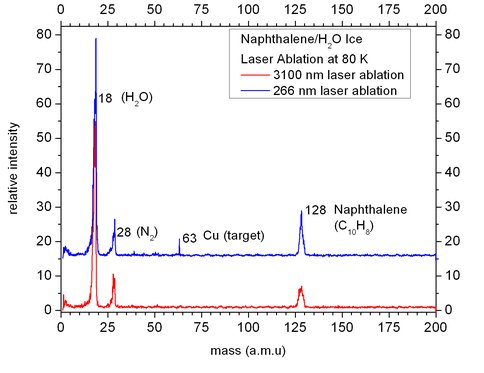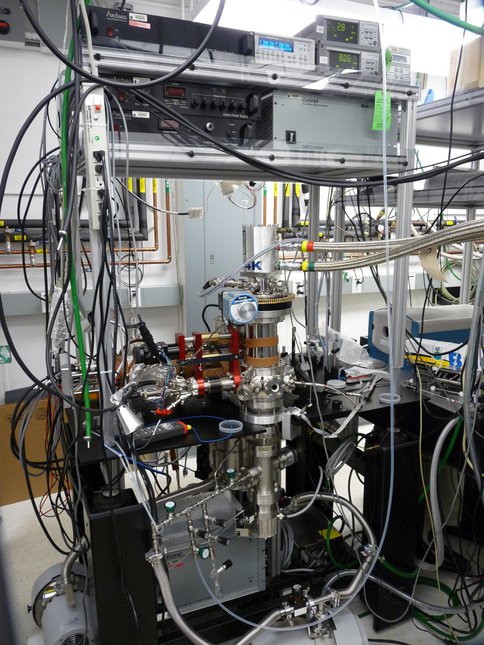2009 Annual Science Report
 NASA Jet Propulsion Laboratory - Titan
Reporting | JUL 2008 – AUG 2009
NASA Jet Propulsion Laboratory - Titan
Reporting | JUL 2008 – AUG 2009
Task 2.2.2.1 Ultraviolet/infrared Spectroscopy of Ice Films
Project Summary
Condensed phase chemistry in organic aerosols can produce large organic macromolecules.
Project Progress
Co-Investigator Murthy Gudipati is developing a “Titan Chemistry” laboratory to support studies of condensed phase photochemistry. Due to the fact that the Titan’s aerosol and surface organic analogs are very unstable molecules at Earth’s ambient temperatures and pressures, these molecules need to be synthesized in a laboratory setting and used immediately for the photochemical and spectroscopic studies of interest. The required synthetic chemistry will be conducted in the Titan Chemistry laboratory. All the necessary glassware and other equipment has been ordered and assembled together. Other important equipment to analyze the Titan’s aerosol and surface chemistry is the matrix-assisted laser desorption and ionization (MALDI) – mass spectroscopy (MS) instrument. This equipment has been developed as a part of Gudipati’s start-up funds at JPL. There is at present a quadrupole mass spectrometer (QMS) attached to the cryogenic system. We have been working on commissioning this MALDI-QMS spectrometer (Figure 1) to interrogate cryogenic Titan organics under irradiation. A sample spectrum of UV and IR laser MALDI-QMS of naphthalene in ice is shown in Figure 2.
Figure 2. MALDI – MS spectrum of naphthalene in water-ice.
Figure 1. MALDI-QMS system at JPL.
-
PROJECT INVESTIGATORS:
-
RELATED OBJECTIVES:
Objective 1.1
Formation and evolution of habitable planets.
Objective 2.2
Outer Solar System exploration
Objective 3.1
Sources of prebiotic materials and catalysts
Objective 3.2
Origins and evolution of functional biomolecules
Objective 3.3
Origins of energy transduction

